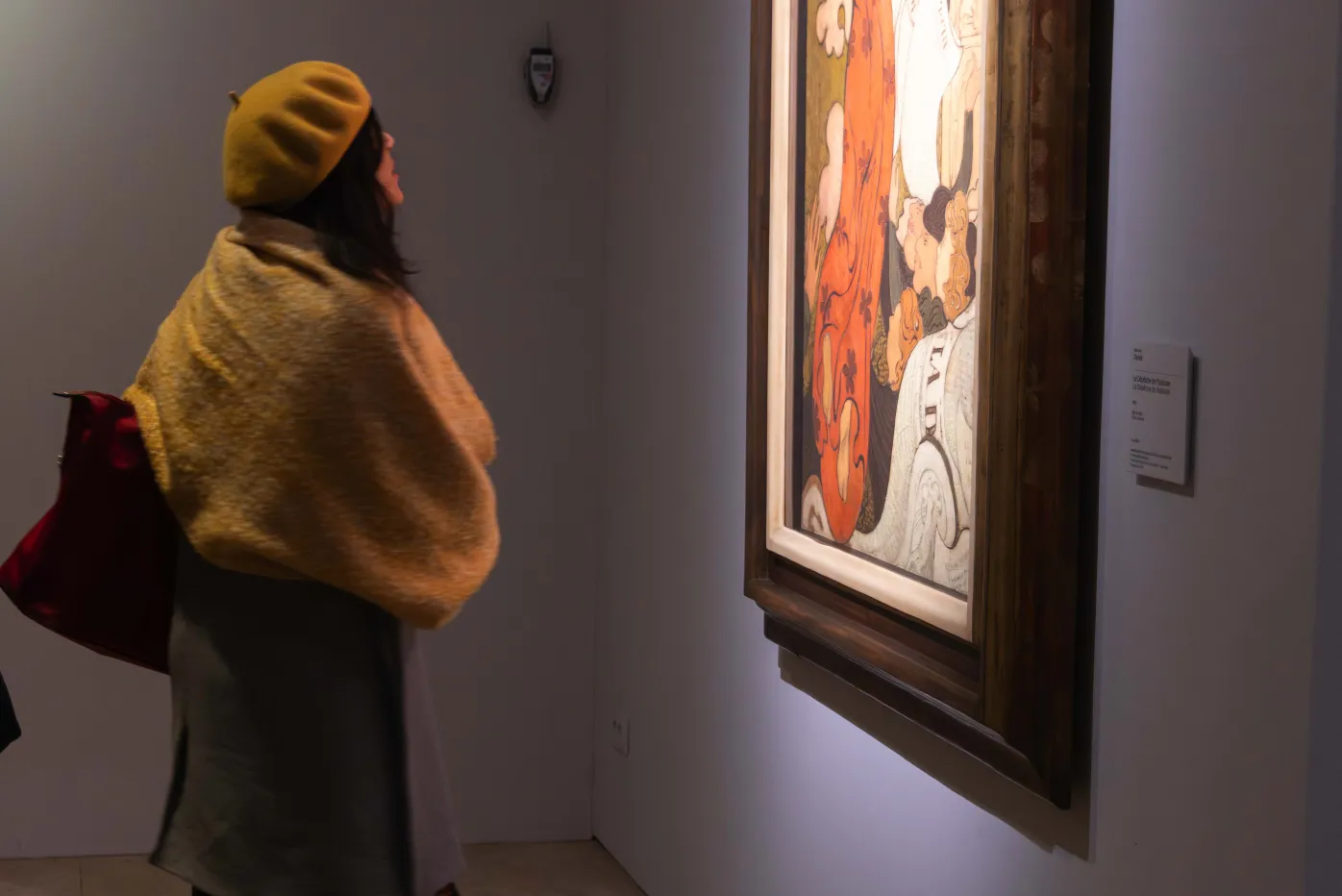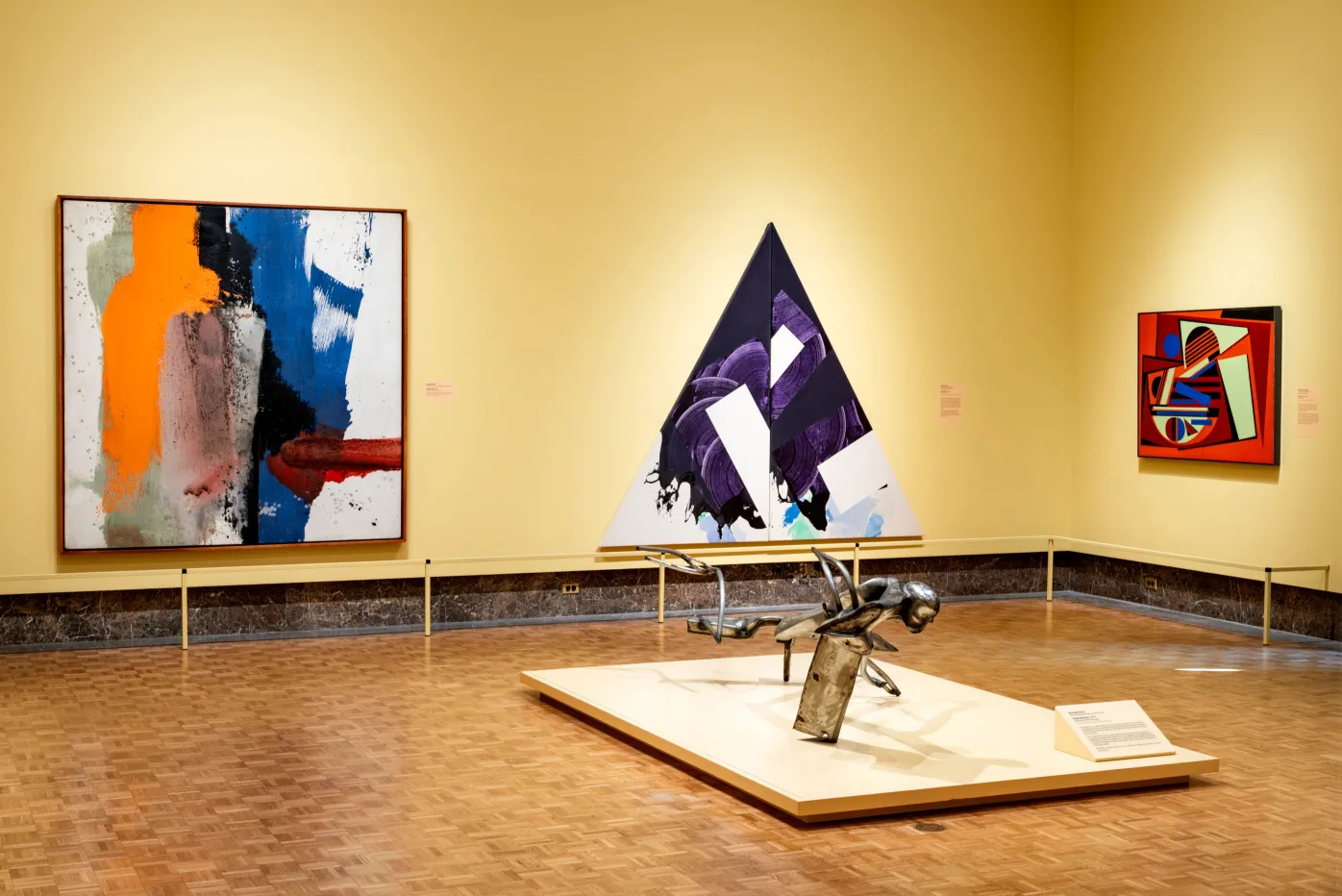From the Director, February 2021
Updated Jul 20, 2022
Bringing communities together digitally
Last Friday, during my weekly walk through the museum galleries, I was thinking how fortunate we have been to safely keep the DIA open since last July while many museums across the world have been closed. Our on-site and gallery redeployed teams are doing a terrific job, alongside those working from home, as we continue to manage uncertainty and face significant operational challenges. During the last decade, our exhibitions and public programs have kept the visitors at the center of our efforts, and we have worked diligently to create and co-create in-person gallery experiences that were meaningful, engaging, and reflective of the communities that we serve. As a visitor-centered museum, we want the schools, the seniors, our community partners, and the public in general to come into the building to enjoy the DIA experiences first-hand as we excel to provide our art services to the residents of Macomb, Wayne, and Oakland counties and beyond. Because our work mostly focuses on the on-site experience, historically the DIA has not paid enough attention to expand our website or digital offerings. As a consequence, we didn’t develop a strong digital infrastructure.
When we closed the museum last March 13, we shifted the work that we did so well, the in-person gallery experience, to the digital one. At that time, we found ourselves in a mostly foreign territory with few tools and resources to quickly respond to the demands of our confined audiences. One could see across the world other museums, which had invested in their digital platforms through-out the years, immediately connect with their audiences with videos and other educational digital activities. From our position of disadvantage, the team got to work right away and while the start was bumpy, we were able to re-orient our creativity to operate in the new environment with incremental levels of success. I am grateful for the patience of our audiences, and for all the hard work the DIA team has been able to deliver with our rudimentary tools. We all learned from this experience, we continue to make progress in this area, and currently we are in the planning phase to create the first DIA digital department, which will be led by our first Chief Digital Officer, hopefully in the second part of this year.
A good example of the phenomenal work our team is doing digitally during the last few months will debut today, Monday, February 1. It is our first-ever all-virtual Black History Month Celebration, which features a robust schedule of activities online, including films, music, food and drink demonstrations, family activities and more. We will certainly miss our programs and audiences on-site this February, but our digital work has continued to be faithful to our visitor-centered approach. We have been working with the community as both co-creators and audiences we serve, we have partnered with local talent, sharing ideas and goals as equals, and raised awareness around civic issues. We have done this work with a panel of community advisors which included Drake Phifer, owner of the production company Urban Organic; Rochelle Riley, Director of Arts and Culture for the City of Detroit; and Errin Whitaker, a Detroit artist whose work focuses on African American identity. Their advice was instrumental in guiding the work of the cross-departmental DIA team that planned and executed the wide range of Black History Month activities: Larry Baranski, Emily Bowyer, Gavin Lynch, Rudy Lauerman, Elliot Wilhelm, Sharon Harrell, Chriss Clark, Valerie Mercer, Zac Frieling, Judith Dolkart, and Syretta Simpson. To all of them my heartfelt thank you. While our celebration will miss the community connection that comes with the irreplaceable in-person gatherings, presenting an online program will allow the DIA to share stories with new audiences, including those in our region who have not yet visited the museum and visitors outside our community who cannot travel.

One of my favorite authors, the Persian medieval Sufi poet Rumi, wrote that “A story is like water, that you heat for your bath. It takes messages between the fire and your skin. It lets them meet.” In a similar fashion, our team tells stories to safely bring communities together.
The DIA is the water where all of us can meet and benefit from each other, now digitally.

DIA Director Salvador Salort-Pons pictured wearing a blue suit and standing in front of the museum
Bringing communities together digitally
Last Friday, during my weekly walk through the museum galleries, I was thinking how fortunate we have been to safely keep the DIA open since last July while many museums across the world have been closed. Our on-site and gallery redeployed teams are doing a terrific job, alongside those working from home, as we continue to manage uncertainty and face significant operational challenges. During the last decade, our exhibitions and public programs have kept the visitors at the center of our efforts, and we have worked diligently to create and co-create in-person gallery experiences that were meaningful, engaging, and reflective of the communities that we serve. As a visitor-centered museum, we want the schools, the seniors, our community partners, and the public in general to come into the building to enjoy the DIA experiences first-hand as we excel to provide our art services to the residents of Macomb, Wayne, and Oakland counties and beyond. Because our work mostly focuses on the on-site experience, historically the DIA has not paid enough attention to expand our website or digital offerings. As a consequence, we didn’t develop a strong digital infrastructure.
When we closed the museum last March 13, we shifted the work that we did so well, the in-person gallery experience, to the digital one. At that time, we found ourselves in a mostly foreign territory with few tools and resources to quickly respond to the demands of our confined audiences. One could see across the world other museums, which had invested in their digital platforms through-out the years, immediately connect with their audiences with videos and other educational digital activities. From our position of disadvantage, the team got to work right away and while the start was bumpy, we were able to re-orient our creativity to operate in the new environment with incremental levels of success. I am grateful for the patience of our audiences, and for all the hard work the DIA team has been able to deliver with our rudimentary tools. We all learned from this experience, we continue to make progress in this area, and currently we are in the planning phase to create the first DIA digital department, which will be led by our first Chief Digital Officer, hopefully in the second part of this year.
A good example of the phenomenal work our team is doing digitally during the last few months will debut today, Monday, February 1. It is our first-ever all-virtual Black History Month Celebration, which features a robust schedule of activities online, including films, music, food and drink demonstrations, family activities and more. We will certainly miss our programs and audiences on-site this February, but our digital work has continued to be faithful to our visitor-centered approach. We have been working with the community as both co-creators and audiences we serve, we have partnered with local talent, sharing ideas and goals as equals, and raised awareness around civic issues. We have done this work with a panel of community advisors which included Drake Phifer, owner of the production company Urban Organic; Rochelle Riley, Director of Arts and Culture for the City of Detroit; and Errin Whitaker, a Detroit artist whose work focuses on African American identity. Their advice was instrumental in guiding the work of the cross-departmental DIA team that planned and executed the wide range of Black History Month activities: Larry Baranski, Emily Bowyer, Gavin Lynch, Rudy Lauerman, Elliot Wilhelm, Sharon Harrell, Chriss Clark, Valerie Mercer, Zac Frieling, Judith Dolkart, and Syretta Simpson. To all of them my heartfelt thank you. While our celebration will miss the community connection that comes with the irreplaceable in-person gatherings, presenting an online program will allow the DIA to share stories with new audiences, including those in our region who have not yet visited the museum and visitors outside our community who cannot travel.

One of my favorite authors, the Persian medieval Sufi poet Rumi, wrote that “A story is like water, that you heat for your bath. It takes messages between the fire and your skin. It lets them meet.” In a similar fashion, our team tells stories to safely bring communities together.
The DIA is the water where all of us can meet and benefit from each other, now digitally.


